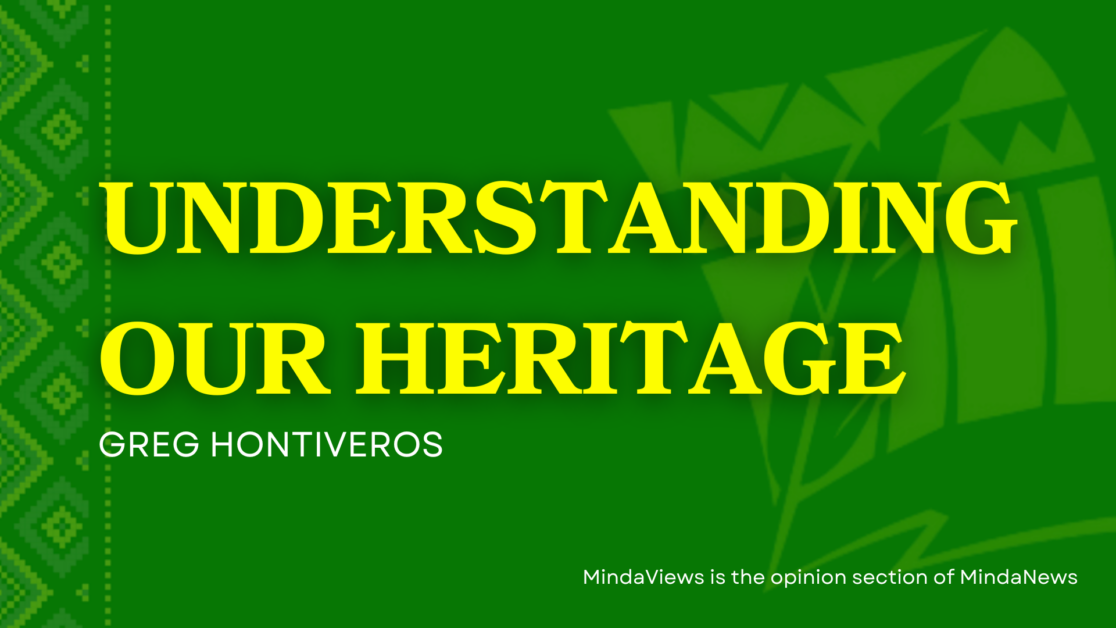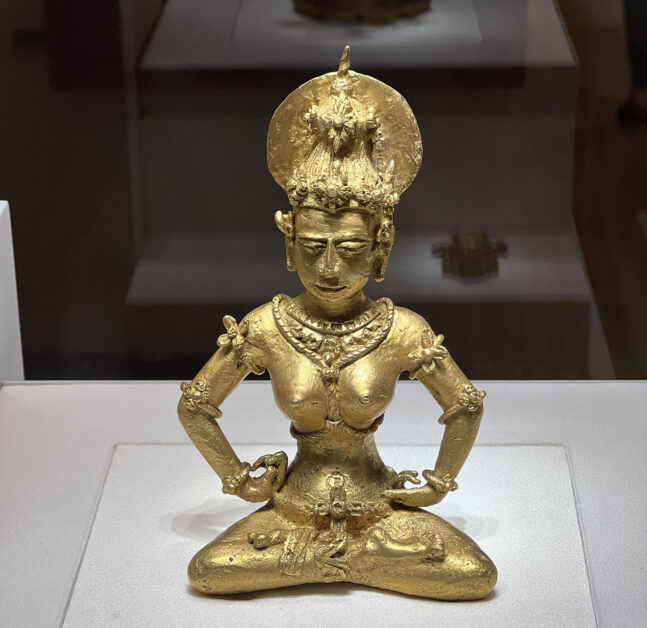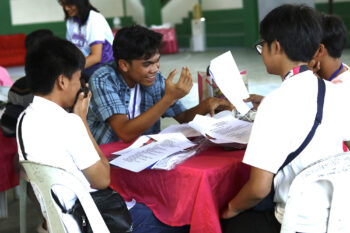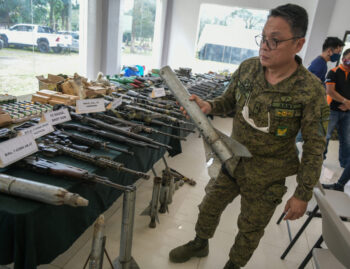
UNDERSTANDING OUR HERITAGE
The Earliest Recorded Trade Mission to the Chinese Empire from the Philippine Islands
2nd of a series
The Hindu-Buddhist Influences In Our Culture
In the usual estimation about the beginnings of our history, most textbooks viewed the Spanish entry as the starting point. Any reference to our pre-colonial past is shallow and perfunctory. With the traditional practice of historical research dependent purely on archival or documentary sources, the paucity of written records from the pre-colonial era has made the status of Philippine history such a dismal discipline, an unwanted child in many secondary and collegiate courses.
In this essay, we shall take a multi-disciplinary approach to historiography. This means bringing to the consciousness of our public other disciplines that will make a rounded view of our past: geography, archaeology, linguistics, genetics, ethnography, folklore, etc.
On the other hand, it is worthwhile to take a serious look at the intermediate layer between our indigenous roots and our colonial experience. There is a strong tendency to view the various tribes in our country as living in splendid isolation. Nothing is farther from the truth. Those Filipino natives living along coastlines and the plains, the demographic majority then and now, have a generally maritime orientation. They’re part of what latterly were called the Austronesians who peopled the islands and the mainland coastal margins of Southeast Asia. They’re the foundation of the largest population expansion in history that extended to the islands in the Pacific in the east, and towards Madagascar in Africa in the west.
Why did I bring this up? It is to address the Hindu-Buddhist influence that permeated the fabric of our culture over a period of time that dwarfed our colonial experience. Back in the sixties, our academic historians were skeptical, even contemptuous, of this link. Unlike the rest of Southeast Asia, the Philippines does not have those vast religious complexes like the Angkor Wat in Cambodia or the Borobodur in Indonesia, and the elaborate spiritual hierarchies and liturgies afforded by both Hinduism and Buddhism. Fair enough.
In 1967, Prof. Lourdes Raissa Gomez of Ateneo de Manila verbalized this skepticism: “In the Philippines there are some who still expect to find in a dense, dark jungle, a Hindu temple or a Buddhist stupa. To them sound history speaks sobering words about centuries spent on the outer rims of two mighty and successive Indian empires. The final answer will probably have to wait until further research discloses additional explanatory inscriptions or new historical, linguistic, or archaeological evidence linking the Philippines’ past to that of Southeast Asia or vice-versa.”
To this point, O.W. Walters, one of the giants in ancient Asian history, cautioned that we should take a more open attitude as newer finds emerge, as “one still knows very little of the early history of the Philippines, but one should not conclude that these islands remained on the fringe of early Southeast Asia.”
Indeed, it would be a mystery that Buddhism which had expanded its northernmost reach in Japan, and that Hinduism and Buddhism had expanded to the easternmost corners of Indonesia, and managed to skip the Philippines.
Walters’ wise counsel proved prophetic. Beginning in 1975, tremendous archaeological discoveries occurred in the northeastern quadrant of Mindanao. The extensive flood control projects in Butuan City led to the discovery of large quantities of Sung Dynasty ceramics and gold ornaments in ancient graveyards, and remains of the balangay boats.
Writing about the “Indian Penetration of Pre-Spanish Philippines: A New Look at the Evidence,” Malcolm H. Churchill attributed such inattention to this aspect of our history to the 400 years of colonial rule. While in the past, political borders were virtually non-existent and trade tied the neighbors to each other, the advent of colonialism compartmented each possession and cut off the neighborly interaction. The Philippines to Spain; Indonesia to the Dutch; Malaysia and Singapore to the British; Vietnam, Laos and Cambodia to the French.
The vast Indian sub-continent became the English monarchs’ greatest colonial possession – British India – now the independent nations of India, Pakistan, Bangladesh, Sri Lanka, and Burma. In the dying embers of the Chinese Empire, its major cities were cut up into concessions by Western imperial masters.
Are there compelling proofs to show that there were cultural inroads by Hinduism and Buddhism over time?
The Linguistic Record
Probably the most immediate proof of our linkage to the Hindu-Buddhist cultural stream from other parts of Southeast Asia are the loan-words from Sanskrit that are present in Philippine languages. Dr. Juan Francisco, the pioneering Indologist (an expert on the cultural impact of Hinduism), has pointed to the presence of words in our native languages with their provenance from Sanskrit.
Among the most popular are the words Bathala and diwata. These speak of the Supreme Being(battara) and of divinity or worship (devata). But there are a lot more words that have the same provenance: diwa (deva), budhi (bodhi), guro (guru), agham (agama), balita (vartta), katha (gatha), mahalaga (maharga), mukha (mukka), dukha (dukkha), laho (rahu), sampalataya (sampratyaya), saranggola (layang gula), tala (tara), sutla (sutra), etc.
The Butuan Heritage Society has acquired from a local collector a wooden sungka found together with 1,000-year old ceramic artifacts, an ancient board game around the Indian Ocean. The Filipino sungka derives from the Indian word chanka. In Butuan, however, the natives call it mangcala,which is what is called mancala in Sumatra. The same two terms were featured in Stephen Oppenheimer’s book, “Eden in the East,” to refer to this ancient board game incised with cuplets on large rocks.
Archaeological Proof
Even more convincing will be facts on the ground, a result of the scientific study of archaeology. The earliest of these finds (1917) was the Golden Image of Agusan. It is on permanent display at the Grainger Hall of Gems of the Field Museum. Rob Linrothe, a Tibetan Buddhism scholar, finally identified the image as that of Vajralasya, one of the four principal serving goddesses in the Buddhist pantheon.

While an awesome item, it was a stand-alone figurine that needed corroboration in order to understand its provenance and its significance to our pre-colonial past.
The spectacular finds beginning in 1975 finally depicted a holistic picture of an ancient trading harbor that traded gold, beeswax, and aromatics. The harbor’s location is well away from the trade routes that crisscross the South China Sea, and at the extremity near the Pacific Ocean.
Why Butuan?
The hunger for gold by the Indian Empire and the Indianized states of Southeast Asia. In the next series, The Allure of Gold, we shall examine the alternative shift to the east for this item.
The northeast quadrant of Mindanao, which the Spanish colonial government called the Distrito de Caraga, was the nerve -center of the extraction of gold from its rivers, with Butuan as the trading harbor. In her latest Zoom lecture, Dr. Florina Capistrano-Baker, pioneer curator of Ayala Museum’s Philippine Ancestral Gold and the principal proponent for greater focus on our Hindu-Buddhist heritage, sees the ancestral gold collections from Butuan, the Surigao Treasures, and those retrieved from neighboring places, in one regional bloc.
Quite a large number of the items show the Hindu-Buddhist design motif, thus attesting to the provenance of the finest gold artisans to be fielded in this gold-rich area. While undoubtedly local understudies learned from the masters and put their indigenous imprint in later items, the transference of Hindu-Buddhist culture at the early stage is seen in these outstanding items: Kinnari: the half bird, half woman from Hindu mythology for the female beauty. Upavita: the Brahmin caste cord.
Garuda: the recurring design of a powerful bird that could lift an elephant to the skies. Mandala: concentric circles enclosed by a square related to the Buddhist pantheon. Dharmahakra: the wheel of law. Mahapratisara Gold Amulet: a thin gold strip with a Buddhist verse to protect its owner.
One must add here the ivory seal from a Sumatran rhinoceros, probably a trading stamp, with the word Butuan in Sanskrit incised on the seal.
There are other humbler, non-gold items that depict a Hindu-Buddhist icon:
Garuda’s claws on an elephant head at the prow of a wooden boat figurine.
A Javanese Buddhist bell
We are heirs of the great civilizations of Asia, as much as we became creators that contribute our share to these concerts of civilizational wealth.
It is this intermediate layer, between our indigenous cultural roots and our colonial experience that should once more be placed in the forefront of our cultural concerns for therein lies a greater understanding of ourselves.
(Greg Hontiveros of Butuan City is an independent researcher on historical studies. Hontiveros has two published books and a dozen papers published in the Journal of History and some university journals. His focus is on aspects of Mindanao history and culture).
References:
F. Capistrano-Baker ed., Philippine Ancestral Gold (2012)
R. Orlina, The Agusan Mahapratrisara Gold Amulet
G. Hontiveros, Butuan of a Thousand Years (2004)
G. Hontiveros, Hindu-Buddhist Influences in our Culture (National Museum Month Zoom lecture 2022)
READ PART 1
UNDERSTANDING OUR HERITAGE: The Earliest Recorded Trade Mission to the Chinese Empire from the Philippine Islands
1st of a series







